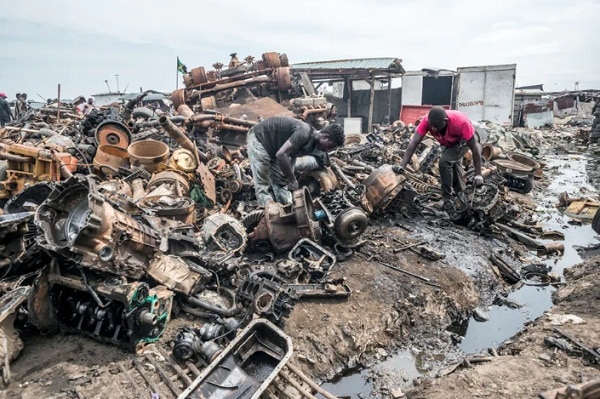Asia stands as the world’s largest plastic-producing region, manufacturing approximately 51 per cent of the total global production of plastic materials
Sheet after sheet amounting to more than 88 pounds of plastic was pulled out of a dead whale’s intestines in the Philippines. Clogged-up drainage systems exacerbated the impacts of deadly floods in Bangladesh during the devastating monsoon seasons.
Once beautiful lakes and rivers in India and China are now forever tainted by the irresponsible disposal of men. It is irrefutable that the issue of plastic waste has far-reaching consequences. Yet, this exact problem has been tactfully evaded for decades by governments and entrepreneurs alike.
In 2017, the United Nations deemed that approximately seven billion of the 9.2 billion tonnes of plastic produced from 1950-2017 became plastic waste, ending up in landfills or dumped. The elephant in the room, our capitalistic society avoided re-imagining the final stages of many product life cycles, always opting for the most efficient, cost-effective and fastest way to get waste out of sight.
At the centre of the plastic waste problem stands Asia, a continent that has long chosen to turn a blind eye to its root causes and insidious impacts. Luckily, the effects stemming from decades of ignorance and oversight have finally forced us to divert more attention to this area, following the wave of growing innovations in other more-developed regions in the world, namely North America and Europe.
As we delve deeper into the plastic industry in Asia, I implore you to ponder more about the kinds of solutions the region needs as we evaluate the root causes, main challenges and key innovations that have emerged in Asia in recent years.
In the first edition of this three-part series on the Asian plastic waste ecosystem, I would like to explore some of the major factors that have contributed to the problem, especially in the context of Asia.
You may ask – why Asia?
To begin, Asia stands as the world’s largest plastic-producing region, manufacturing approximately 51 per cent of the total global production of plastic materials. Furthermore, in 2019, statistics released by Our World in Data showed that Asia was the greatest emitter of plastic waste into oceans, at a whopping 80.99 per cent.
Not only does this affirm the extent of plastic produced in Asia, but it also sheds light on the underdevelopment of proper waste management systems in the region that could have facilitated the proper disposal of plastic waste. For comparison, total mismanaged waste from North America and Europe was less than five per cent, speaking volumes about the amount of improvement required of the plastic waste management systems in Asia.
Coupled with the fact that the recycling systems and technologies in the region are still years behind, it is evident that plastic waste has become one of Asia’s most salient problems. Yet, though many deals and commitments to change have been made, plastic remains firmly entrenched in the region’s economy, especially in Southeast Asia (SEA).
Rising affluence
Firstly, the burgeoning middle class and population growth in many Asian economies have led to the rise of consumerism and a multi-faceted increase in the consumption of plastics.
The past few years of rapid economic growth in this region have led to a collective increase in middle-class income, directly increasing their purchasing power and, in turn, the ability to purchase goods and services both locally and from overseas.
Directly, this translates to an increase in the consumption of goods that contain plastics. More indirectly, this has also resulted in the explosive growth of the packaging industry, exponentially increasing the incidences of companies using single-use plastics to deliver their goods.
This type of delivery model was pioneered in South and Southeast Asia and has become so “entrenched” that big industries now use it as a “justification”, says Von Hernandez, a renowned Filipino environmentalist and Goldman Prize winner.
Thus, it is arguable that the roots of plastic consumption in Asia lie in socio-economic factors such as rising affluence and a change in consumers’ tastes and preferences.
Inadequate waste management infrastructure
Secondly, many Asian countries, especially in SEA, often have inadequate waste management infrastructures. Their primary method of disposal is still heavily reliant on landfills and open dumping.
Thus, it is indicative that the investments into the waste management systems are insufficient for good municipal waste management, let alone be enough to inject further value into the system through recycling.
Evidently, only 18 per cent to 28 per cent of recyclable plastic is recovered and recycled in the region, as compared to 38 per cent in Europe. Hence, there is a greater need for governments to prioritise and invest heavily in this area.
The volume of imported waste
Yet, while the statistics seem to suggest that Asia should be regarded as the epicentre of the plastic problem, the reality is often much more muddled. There is another part of the narrative that has not been explored much — the percentage of plastic waste that was not generated domestically and, in fact, arose due to developed countries importing their waste to less developed ones, especially those in SEA.
Case in point, about 74 per cent of the exported plastic waste in the world has entered Asia in recent years. From this lens, the plastic problem becomes much more global and interconnected, and thus much more difficult to attribute responsibility to.
Hence, it is pertinent to note that the plastic waste problem is not a regional but a global responsibility. More developed countries with the appropriate technologies and methods should aid less-developed countries, be it formally through international treaties or through technological transfers.
In part 2, we will be covering the main problems faced by stakeholders like corporations and regulators as they try to tackle the plastic problem.
Source: e27










